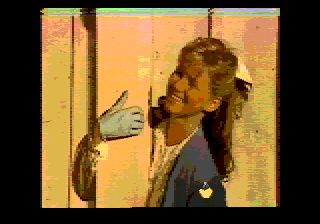I had so much fun at last year’s WordCamp that I decided to register for this year’s festivities, which have been expanded to cover 2 days. I’m always on the lookout for ways to improve this blog and the communication it provides, as well new multimedia technology angles.

The first talk of the day — PodCasting — was highly relevant to multimedia, in fact; it was about PodPress, a WordPress plugin that makes PodCasting more ergonomic. The author talked about how much complexity the PodPress plugin currently embodied, which actually confused me a little. To my thinking, the plugin just processes a little bit of a multimedia file in order to find its metadata and knows how to spit out that metadata along with a MIME type via PHP. But I oversimplify. Actually, the demo he gave presented the plugin in its slickness, going so far as to show you, the admin, how your PodCast will actually appear to the users of various services, most prominently iTunes, but also several other PodCasting client programs. Plus, the plugin deals with an impressive array of multimedia files and probably handles lots of idiosyncrasies that arise in various file types.
Next up was a debate regarding Blogging vs. Journalism featuring John C. Dvorak and Om Malik. It was an interesting discussion though I personally didn’t take very much away from it since I don’t care about the blog vs. serious news source distinction for the purpose of this research journal-style blog. One take-away point: Blogs and news sites have very distinct styles and stigmas attached– so, do you want your site to look like a blog or a news site?
It was during this talk that I started thinking… there was a 4.2 earthquake here early yesterday morning. Though it was scarcely notable in the grand scheme of things, if that earthquake had waited about 30 hours to strike — during a bloggers conference — it could have had unprecedented live internet coverage.
After lunch came a wonderfully animated speaker delivering her talk about Kicking Ass Content Connections. She spoke of how last year’s fad was tagging while this year’s fad is relationship building — and proceeded to extol the virtues of the latter. I thought it ironic that she would introduce the topic in that manner as the comparison immediately cast it in a negative light. However, this relationship building notion is something I ponder from time to time as I periodically seek out other blogs that deal with similar interests as this one. I generally find that the few blogs that pertain to the subjects at hand are all hosted right here @ multimedia.cx. But I keep searching, disbelieving that we could be alone in this vast universe called the internet. Another point she made was that even some of the most mundane blogs that record an individual’s tedious day to day activities may, at some time in the distant future, provide archaeologists a clue of what life was like in this day and age. During this discourse, I was reminded of this Onion article: Recently Unearthed E-Mail Reveals What Life Was Like In 1995.
Still, I must say that I admire her for the yeoman’s work she does in her primary role of documenting WordPress.
Next was Blog Monetization, a topic that I still stubbornly refuse to care about. However, a key takeaway point from the speaker was: would you read your blog if it wasn’t your blog? I.e., if someone else wrote the same content as you, would you find it interesting?
Contributing to WordPress was a tag team effort– As for the first speaker, I thought Tobey McGuire’s Peter Parker was delivering a convocation. But I have to give him credit because his pre-written and obviously oft-rehearsed speech worked surprisingly well. This led into the second speaker whose talk sounded incredibly familiar to me– because it’s basically the same speech I gave at LinuxTag last month. That’s because both presentations dealt broadly with how a prospective contributor can get up and running with helping on an open source development effort, so there is much room for similarity. (This also reminds me that I still need to post my presentation from LT’07. Really, I plan to do this, but I would like to properly annotate my slides for the web since the slides themselves provide zero context.)
The presenter for Designing the Obvious needs proper credit for his courage to dump his entire stock presentation the day of the conference and tailor a brand new, virtually slide-less presentation for this specific crowd. I jotted down a lot of ideas for how to improve my blogs based on the ensuing discussions, just as he warned would happen.
The last talk of today was delivered by a big Google guy who discussed benevolent search engine optimization (SEO) strategies. Quite interesting, though common sense stuff, and I didn’t take away much personally. I operate on a slightly different level for this blog in particular– my SEO strategy is to simply write about stuff that no one else on the entire internet writes about. However, this often comes with the caveat that no one else on the entire internet cares about the stuff.

